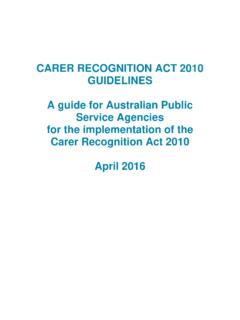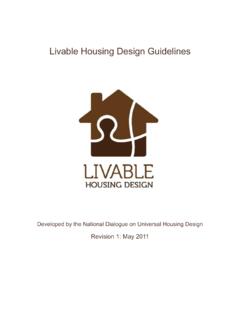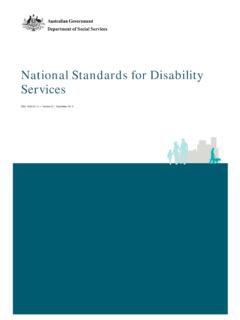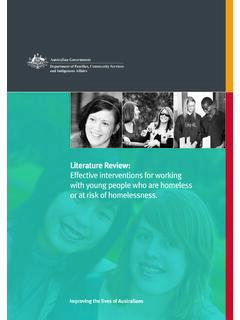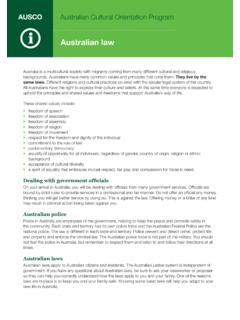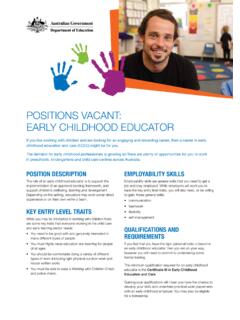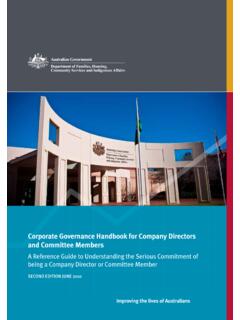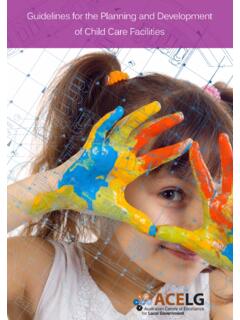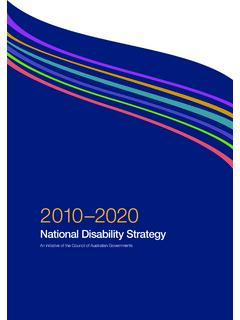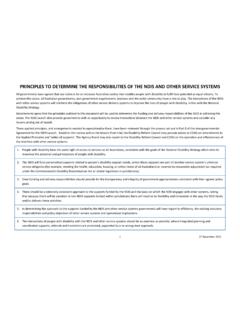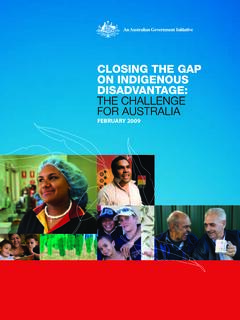Transcription of Establishing and building networks - DSS
1 Establishing and building networks Pauline Kenny, Sam Morley and Daryl Higgins July 2015 Forced adoption support services: Establishing and building networks Australian Institute of Family Studies 2 This work was commissioned and funded by the Australian Government Department of Social Services. Views expressed in this publication are those of individual authors and may not reflect those of the Australian Government or the Australian Institute of Family Studies. Kenny, P., Morley, S., & Higgins, D. (2015). Forced Adoption Support Services: Establishing and building networks . Melbourne: Australian Institute of Family Studies. Australian Institute of Family Studies, Level 20, 485 La Trobe Street, Melbourne VIC 3000 Australia. < > Forced adoption support services: Establishing and building networks Australian Institute of Family Studies 3 Section 1 Introduction For many service providers, agencies and support groups working with people affected by forced adoption and forced family separation policies and practices, networking with one another for support and expertise has been an everyday part of their work.
2 In many ways, grassroots groups, some of which have been operating for decades, have paved the way for how services in the sector can best work together. Despite this level of knowledge and experience, however, there are few public resources available for service providers about how to develop and maintain strong and successful networks with one another in this particular field. To support improved services to their clients, Forced Adoption Support Services (FASS) funded by the Department of Social Services (DSS) have been asked to establish local networks with other post-adoption service providers, government, and non-government In particular, the local networks aim to engage those practitioners within the broader health, mental health and allied health sectors whose primary role is not post-adoption support ( , general practitioners [GPs] and mental health professionals), but who are nonetheless an essential component of an effective support Local networks are considered a vital part in ensuring that there is a continuum of care that increases the likelihood of services meeting the very broad range of needs of those affected by forced adoption and family separation (see Box 1).
3 This resource aims to assist FASS by providing guidance in developing and maintaining networks that are positive, sustainable and, most importantly, work to meet the needs of individuals seeking support. It is part of a suite of resources developed by the Australian Institute of Family Studies (AIFS) in partnership with DSS. The Institute has undertaken key research in the area of past adoptions, including the National Research Study on the Service Response to Past Adoption Practices (Kenny, Higgins, Soloff, & Sweid, 2012) and the Forced Adoption Support Services: Scoping Study (Higgins, Kenny, Sweid, & Ockenden, 2014). Information from those studies (including information from service providers, policy makers, and those directly affected by past forced adoption and family separation) has been included in this publication. 1 See the media release by the Minister for Social Services: < > and the DSS Forced Adoption Practices web page: < >.
4 2 This has also been recognised through the Commonwealth s funding for the development of guidance and training on forced adoptions for health professionals. Forced adoption support services: Establishing and building networks Australian Institute of Family Studies 4 Box 1: Service and support needs of those affected by forced adoption and family separation The needs of people who have been affected by forced adoption and family separation include: counselling and support for issues such as: trauma; post-traumatic stress disorder; grief and loss; problems with identity, attachment and self-confidence; feelings of shame and guilt; depression; and anxiety; gaining access to information, including family, medical and other records; obtaining support throughout the search and contact process, including support and mediation services for making contact and developing relationships with family from whom they were separated.
5 And achieving restorative justice through activities between victim/survivors and those who have harmed them, or agencies responsible for that harm, in order to acknowledge and atone for the wrong done, which can include truth and reconciliation processes, and resources being made available to meet the current needs of affected individuals (such as physical and mental health services to address trauma, grief and loss, and the financial costs associated with search and contact with lost family members). Access to support At some stage in their life, a person affected by past adoptions (including forced adoption and family separation) is likely to seek support from a service in relation to their adoption experience. An individual s level of need and their engagement with services can vary and occur at any stage of their adoption journey.
6 Historically, there has been no clear or single identifiable entry point in the existing service system. Forced adoption support services: Establishing and building networks Australian Institute of Family Studies 5 How have people previously found support? The main types of services that have existed to the present time, have been state/territory-funded post-adoption services. Each of those jurisdictions has its own distinct service system (generally a combination of departmental services and outsourcing to other agencies) that has developed from different organisational histories and relationships, as well as varying levels of funding available to agencies and groups. There can also be overlaps between services as agencies often provide for a range of different client needs ( , adoption information services may also provide search and contact services).
7 However, in most cases there is a predominant service offered. In general, the key service types are: adoption information services including other services relating to past adoption, such as the Registry of Births, Deaths and Marriages; search and contact services; post-adoption support services offering a suite of services that may include search and contact, counselling, or other mental health services; and peer support and advocacy groups where members or participants can benefit from fellow attendees who have a common history, and can learn from others who are at different stages in their adoption journey. In addition, services such as specialist psychiatric, psychological and/or mental health services, general practitioners and allied health services ( , alcohol and other drug agencies) are also accessed by those affected by forced adoption and forced family separation.
8 What we now know, however, is that the quality and availability of providers with appropriate knowledge and experience in this specialised field is highly variable. This evidence has been taken into consideration by DSS when planning for a more cohesive and collaborative response to the service delivery needs of people affected by forced adoption and forced family separation. It has led to the establishment of Forced Adoption Support Services that have been encouraged to develop and/or participate in local networks . Why use this resource? In the process of Establishing local networks , it is essential that funded agencies consider as many relevant service types as possible in order to meet the broad and often divergent range of needs of service users. For many service providers, engaging with and relying on longstanding relationships with their counterparts has been a part of their everyday work within the post-adoptions Forced adoption support services: Establishing and building networks Australian Institute of Family Studies 6 sector.
9 While these relationships may be well established and reliable, the nature of how these interactions have been operationalised may require further thought in the context of how service providers enhance the current skill base and capacity of the existing models of operation ( , cross-referrals). Here, we aim to provide information that will assist in the formation of local networks in each state and territory that is both practical, as well as drawing together the evidence base that FASS will need to consider, such as: where their current strengths lie; where there are gaps that need filling; which professions/individuals/groups may be best placed to fill those gaps; against which criteria potential local network members will be assessed; how to formulate selection criteria and a clear selection process; and how to obtain the best results out of local networks .
10 In this Establishing and building networks resource guide, we also provide example materials that can be used as templates that services can build on/adapt to meet their individual requirements. These practical tools include topics such as how to promote information about the establishment of the local networks and recruitment of members ( , the Communications template); creating terms and conditions of membership and associated agreements; defining roles and responsibilities; how to effectively run meetings; and more complex strategies for dealing with risk and conflict. Importantly, we also provide examples of evaluation resources that can measure the overall quality of services being provided. The basics: Understanding networks What is a network? A network broadly refers to a group of agencies, organisations or individuals that agree to work collaboratively or in partnership to achieve a common goal.
